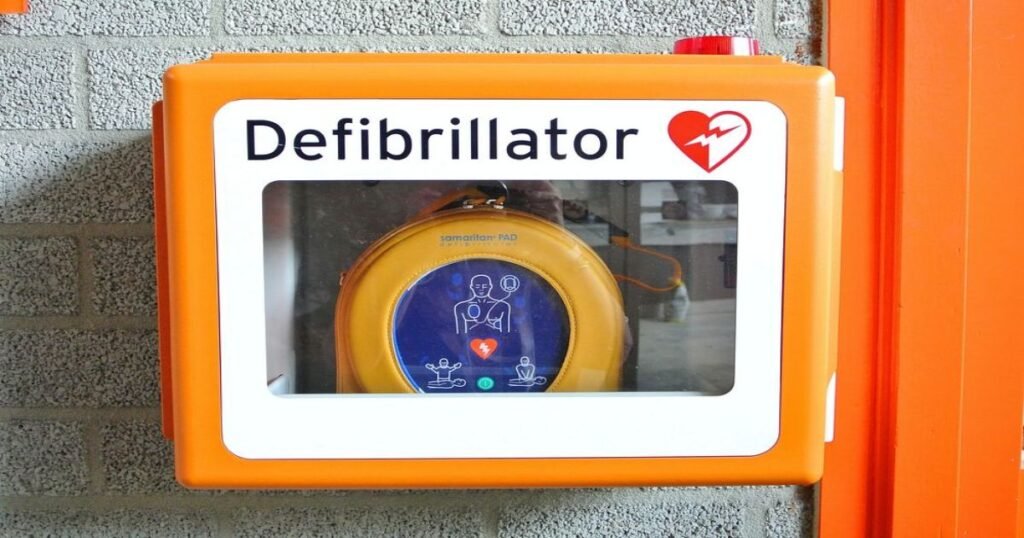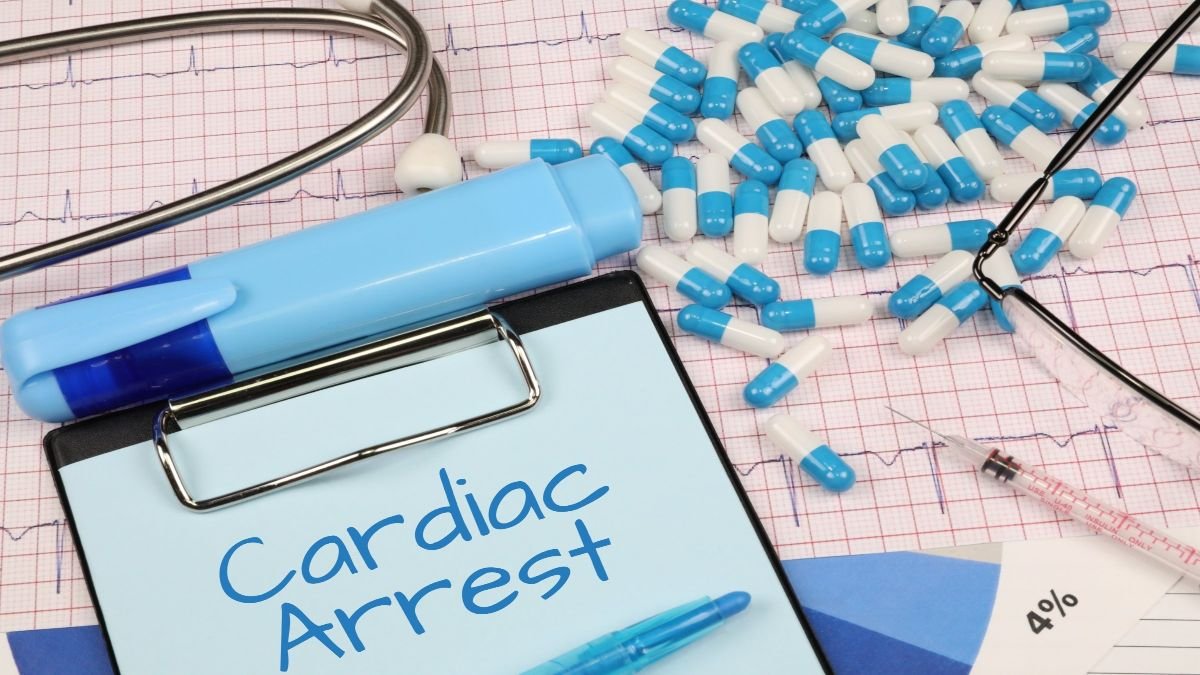Overview:
Cardiac arrest is a life-threatening medical emergency that occurs when the heart suddenly stops beating, leading to the cessation of blood flow to the brain and other vital organs.
Unlike a heart attack, which results from a blockage in blood flow to the heart, cardiac arrest is primarily an electrical problem.
When this condition strikes, quick and decisive action can mean the difference between life and death. Despite being one of the leading causes of death globally, many people remain unaware of its signs, causes, and how to prevent it.
This blog aims to provide a comprehensive overview of cardiac arrest, including its symptoms, causes, risk factors, treatment options, and preventive measures.
Table of Contents
What is Cardiac Arrest?
Cardiac arrest is a sudden loss of heart function, breathing, and consciousness. It is often triggered by an electrical disturbance in the heart that disrupts its pumping action, stopping the flow of blood to the body.
This condition can occur in people who may or may not have a preexisting heart condition. During cardiac arrest, the heart’s electrical system malfunctions, causing an irregular heartbeat (arrhythmia).
As a result, the heart cannot pump blood efficiently, leading to a complete stop of circulation.
Cardiac arrest is a critical medical emergency that, if not treated within minutes, can lead to sudden cardiac death (SCD).
The immediate administration of cardiopulmonary resuscitation (CPR) and defibrillation can significantly increase the chances of survival.
How to perform CPR?

Here’s a step-by-step guide for performing CPR:
1. Check the Scene and the Person
- Ensure the area is safe.
- Tap the person and shout to see if they respond.
2. Call for Help
- If unresponsive, call emergency services or have someone else do it.
- If available, grab an AED (Automated External Defibrillator).
3. Position the Person
- Carefully place the person on their back on a firm surface.
4. Open the Airway
- Tilt the head back slightly and lift the chin to open the airway.
5. Check for Breathing
- Look, listen, and feel for normal breathing (no more than 10 seconds).
- If they are not breathing or only gasping, begin CPR.
6. Perform Chest Compressions
- Place the heel of one hand on the center of the chest, and interlock your fingers with the other hand.
- Keep your elbows straight and shoulders over your hands.
- Compress the chest at least 2 inches deep at a rate of 100-120 compressions per minute.
7. Give Rescue Breaths (if trained)
- After 30 compressions, give 2 breaths(30:2 ratio):
- Pinch the nose shut, make a seal over the person’s mouth, and blow into their mouth for about 1 second (watch for the chest to rise).
- Repeat for a total of 2 breaths.
8. Continue CPR
- Keep performing cycles of 30 chest compressions and 2 rescue breaths until help arrives, an AED becomes available, or the person shows signs of life.
9. Use the AED if Available
- Turn on the AED and follow the audio/visual prompts.

Important Notes
- If you’re untrained or unsure about giving breaths, focus on hands-only CPR (chest compressions only).
- Always keep your hands in the center of the chest and do not stop until emergency personnel arrive or the person shows signs of recovery.
Training: Consider taking a certified CPR course for hands-on practice and more detailed instructions.
Symptoms of Cardiac Arrest
Cardiac arrest typically occurs without warning and can manifest rapidly. Some of the common signs and symptoms include:
- Sudden Collapse: The most apparent symptom is a sudden collapse, as the person may lose consciousness almost immediately.
- No Pulse or Breathing: There is an absence of a pulse and breathing, indicating that the heart has stopped pumping blood.
- Unresponsiveness: The affected person does not respond to touch, sound, or any form of external stimuli.
- Chest Pain or Discomfort: Some individuals may experience chest pain, shortness of breath, or palpitations just before cardiac arrest.
- Dizziness or Lightheadedness: Feeling dizzy or faint can be a precursor to a cardiac event.
- Gasping or Gurgling Sounds: Agonal breathing, which sounds like gasping or gurgling, may occur during the early stages of cardiac arrest.
Recognizing these symptoms and acting quickly by calling emergency services and starting CPR can save a person’s life.
Causes of Cardiac Arrest
Cardiac arrest can be caused by a variety of factors, many of which are related to underlying heart conditions. Some of the primary causes include:
- Coronary Artery Disease (CAD): CAD, characterized by the narrowing of coronary arteries, is a common cause of cardiac arrest. It limits blood supply to the heart muscle, increasing the risk of arrhythmias(a condition when the electrical signal that regulates heartbeat doesn’t work properly).
- Heart Attack: A heart attack can trigger cardiac arrest by damaging the heart muscle, leading to electrical instability.
- Cardiomyopathy: This condition involves the thickening or enlargement of the heart muscle, disrupting its normal function and increasing the risk of cardiac arrest.
- Heart Valve Disease: Problems with heart valves can strain the heart and cause arrhythmias, potentially leading to cardiac arrest.
- Congenital Heart Defects: People born with structural heart abnormalities are at higher risk of experiencing cardiac arrest.
- Arrhythmias: Abnormal heart rhythms such as ventricular fibrillation (VF) and ventricular tachycardia (VT) are the most common causes of sudden cardiac arrest.
- Severe Blood Loss or Trauma: Serious injuries or accidents leading to significant blood loss can cause a drop in blood pressure, potentially leading to cardiac arrest.
- Electrolyte Imbalance: Imbalances in key electrolytes such as potassium, magnesium, and calcium can disrupt the heart’s electrical activity.
- Drug Overdose or Poisoning: Certain substances, including illegal drugs and medications, can affect the heart’s function and lead to cardiac arrest.
Risk Factors of Cardiac Arrest
Several risk factors can increase the likelihood of experiencing cardiac arrest. While some are controllable, others are inherent and require regular monitoring and management. Key risk factors include:
- Previous Heart Attack or Cardiac Arrest: Individuals who have previously experienced a heart attack or cardiac arrest are at greater risk.
- Family History of Heart Disease: A family history of heart disease, cardiac arrest, or SCD raises the risk.
- Age and Gender: Men are at a higher risk of cardiac arrest than women, and the risk increases with age.
- Lifestyle Factors: Smoking, excessive alcohol consumption, lack of physical activity, and a diet high in saturated fats contribute to heart disease and increase the risk of cardiac arrest.
- Chronic Conditions: Hypertension, diabetes, and high cholesterol are major risk factors.
- Obesity: Being overweight can lead to other conditions such as high blood pressure, diabetes, and coronary artery disease, all of which are risk factors for cardiac arrest.
- Stress and Anxiety: Chronic stress and unmanaged anxiety can lead to arrhythmias, raising the risk of cardiac arrest.
Treatment for Cardiac Arrest
Cardiac arrest requires immediate treatment. Every second counts, as the chances of survival decrease with each minute that passes without intervention. The most effective treatment methods include:
- Cardiopulmonary Resuscitation (CPR): CPR is a lifesaving technique that helps maintain blood flow to the brain and organs. Immediate CPR can double or triple the chances of survival in cardiac arrest victims.
- Defibrillation: Defibrillation involves delivering an electrical shock to the heart using an automated external defibrillator (AED) or a manual defibrillator to restore a normal heart rhythm. It is the definitive treatment for arrhythmias like VF and VT.
- Medications: After the initial resuscitation, medications such as epinephrine and amiodarone are used to stabilize the heart’s rhythm.
- Post-Cardiac Arrest Care: This includes targeted temperature management (cooling the body to reduce brain injury), optimizing blood pressure and oxygenation, and treating underlying conditions to prevent future episodes.
- Implantable Cardioverter-Defibrillator (ICD): An ICD is a device implanted in individuals who are at high risk of cardiac arrest. It continuously monitors the heart and delivers shocks when necessary to correct arrhythmias.
Prevention of Cardiac Arrest
While it’s impossible to eliminate the risk of cardiac arrest entirely, adopting certain lifestyle changes and taking preventive measures can significantly reduce the likelihood of occurrence:
- Regular Health Checkups: Routine checkups help identify risk factors such as high cholesterol, hypertension, and diabetes that can be managed to prevent cardiac arrest.
- Heart-Healthy Diet: A diet rich in fruits, vegetables, whole grains, and proteins can help maintain heart health and prevent cardiovascular disease.
- Exercise Regularly: Engaging in at least 150 minutes of moderate aerobic exercise or 75 minutes of vigorous exercise per week helps strengthen the heart and maintain a healthy weight.
- Quit Smoking and Avoid Alcohol Consumption: Quitting smoking and avoiding drinking alcohol can decrease the risk of developing heart disease and arrhythmias.
- Manage Stress: Practices such as yoga, meditation, and deep breathing can help reduce stress and lower the risk of arrhythmias.
- Medication Adherence: If you have been prescribed medication for heart disease, it is essential to take it as directed to prevent complications.
Conclusion
Cardiac arrest is a sudden and severe medical emergency that requires immediate attention.
While it can be fatal if not treated promptly, awareness of the symptoms and risk factors, along with quick action such as CPR and defibrillation, can save lives.
Preventive measures like maintaining a heart-healthy lifestyle, managing chronic conditions, and undergoing regular checkups are crucial in reducing the risk of cardiac arrest.
By understanding the nature of cardiac arrest and being prepared, individuals and communities can work together to minimize its impact and improve survival outcomes.
FAQs
1. What is the difference between a heart attack and cardiac arrest?
A heart attack occurs when there is a blockage in the arteries that supply blood to the heart, while cardiac arrest is an electrical problem that causes the heart to stop beating suddenly.
2. What should I do if someone experiences cardiac arrest?
Call emergency services immediately, start CPR, and use an AED if available. Early intervention is critical for survival.
3. Can cardiac arrest be prevented?
While not all cases can be prevented, adopting a healthy lifestyle, managing risk factors, and undergoing regular medical checkups can reduce the likelihood of cardiac arrest.
4. Who is at the highest risk of cardiac arrest?
Individuals with a history of heart disease, previous heart attacks, or congenital heart defects, as well as those with lifestyle-related risk factors like smoking or high blood pressure, are at higher risk.
5. What is an AED, and how does it work?
An AED (Automated External Defibrillator) is a device that delivers an electrical shock to the heart to restore a normal rhythm in cases of cardiac arrest caused by arrhythmias like ventricular fibrillation.

